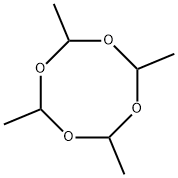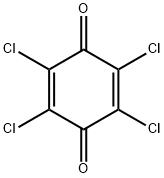Metaldehyde , 97% , 108-62-3
Synonym(s):
Acetaldehyde polymerized
CAS NO.:108-62-3
Empirical Formula: C8H16O4
Molecular Weight: 176.21
MDL number: MFCD00071549
EINECS: 203-600-2
| Pack Size | Price | Stock | Quantity |
| 25G | RMB40.80 | In Stock |
|
| 100G | RMB120.00 | In Stock |
|
| 500G | RMB312.00 | In Stock |
|
| 1KG | RMB548.00 | In Stock |
|
| others | Enquire |
PRODUCT Properties
| Melting point: | 246 °C |
| Boiling point: | 65°C/15mmHg(lit.) |
| Density | 1.27 |
| vapor pressure | 6.6Pa at 25℃ |
| refractive index | 1.4220 (estimate) |
| Flash point: | 50°C |
| storage temp. | Keep in dark place,Sealed in dry,2-8°C |
| solubility | Chloroform (Slightly), Methanol (Slightly) |
| form | Fine Crystalline Powder |
| color | White |
| Water Solubility | 0.02 g/100 mL (20 ºC) |
| Sublimation | 112-115 ºC |
| LogP | 0.12 at 20℃ |
| CAS DataBase Reference | 108-62-3(CAS DataBase Reference) |
| NIST Chemistry Reference | Acetaldehyde, tetramer(108-62-3) |
| EPA Substance Registry System | Metaldehyde (108-62-3) |
Description and Uses
Metaldehyde (CAS: 108-62-3) is a polymer of acetaldehyde
that is used as a pesticide against snails and slugs, and also as
a fuel. It was discovered by von Liebig in 1835, and a century
later its use as a molluscicide was proposed by Gimingham and
Newton in 1937. It is manufactured by reacting acetaldehyde
with various acids at a low temperature. As a molluscicide,
metaldehyde is used for controlling slugs and snails in gardens
of a variety of vegetable and ornamental crops. For this purpose
it is available in both solid and liquid formulations with
metaldehyde concentrations ranging from 1.8 to 8% in pellet
form, or in concentrations of up to 20% in liquid formulations.
Some metaldehyde formulations may consist of other pesticides,
such as arsenic; while others may contain toxic solvents
like ethylene glycol. Therefore, a thorough forensic analysis of
the product is recommended to assess complete risk associated
with ingestion of these products.
Children under the age of 3 years and pets are most
commonly poisoned by ingestion of pellets or cakes containing
metaldehyde. Intoxication by metaldehyde is typically acute,
characterized initially by gastrointestinal and subsequently
followed predominantly by neurologic signs. Vomiting, diarrhea,
ataxia, tremors, convulsions, and hyperthermia are
among the most common toxic signs in children and animals.
Other clinical signs in children include mental confusion,
muscle cramps and tremors, loss of consciousness, and coma.
The proximate neurotoxic mechanisms are not known but
reduced levels of neurotransmitters such as serotonin and
g-aminobutryric acid (GABA) are implicated. Delayed effects of
acute exposure include hepatotoxicity characterized by hepatic
necrosis and increased serum liver enzymes. In general, males
metabolize metaldehyde twice as fast as females. Therefore,
female animals are more sensitive to metaldehyde poisoning
compared to males. Most of the neurotoxic signs are seen at
dose levels greater than 100 mg of metaldehyde per kilogram.
Developmental studies have shown that metaldehyde exposure
during pregnancy does not adversely affect fetuses.
Chronic metaldehyde exposure is unlikely. However,
experimental research has shown that metaldehyde is toxic
under chronic exposure conditions. In males, chronic metaldehyde
exposure causes testicular atrophy and is also toxic to
the prostate gland. It causes atrophy of the prostate gland. It is
not clear whether the effects on male gonads are due to
endocrine disruption or through a different mechanism. There
is also suggestive evidence of carcinogenic potential based on
the presence of benign tumors in female rats and mice of both
sexes.
Provided treatment is initiated early in cases of acute
exposure, prognosis is good. In dogs, the mortality rate in
a recently completed study was 16%. Because there is no
specific antidote, treatment consists of decontamination
measures and symptomatic therapy. Recent formulations of
metaldehyde pesticides contain denatonium benzoate,
a bittering agent. The purpose of adding the bittering agent
is to deter excessive ingestion of the products. This, along
with new labeling guidelines highlighting the risk to children
and pets has caused annual cases to drop significantly
since 2006.
There are over 50 pesticides containing metaldehyde registered for use in the United States. It is commonly used as a pesticide against slugs and snails. It is formulated in ready to use liquid, paste, granules, pellets, minipellets, or meal baits. It is also used as a camping fuel. It may be purchased in a tablet form for the latter use.
Safety
| Symbol(GHS) |   GHS02,GHS06 |
| Signal word | Danger |
| Hazard statements | H228-H301-H313-H330 |
| Precautionary statements | P301+P310a-P304+P340-P320-P330-P405-P501a |
| Hazard Codes | Xn |
| Risk Statements | 10-22-2017/10/22 |
| Safety Statements | 13-25-46-2 |
| RIDADR | 1332 |
| RTECS | XF9900000 |
| HazardClass | 4.1 |
| PackingGroup | III |
| HS Code | 29125000 |
| Hazardous Substances Data | 108-62-3(Hazardous Substances Data) |



